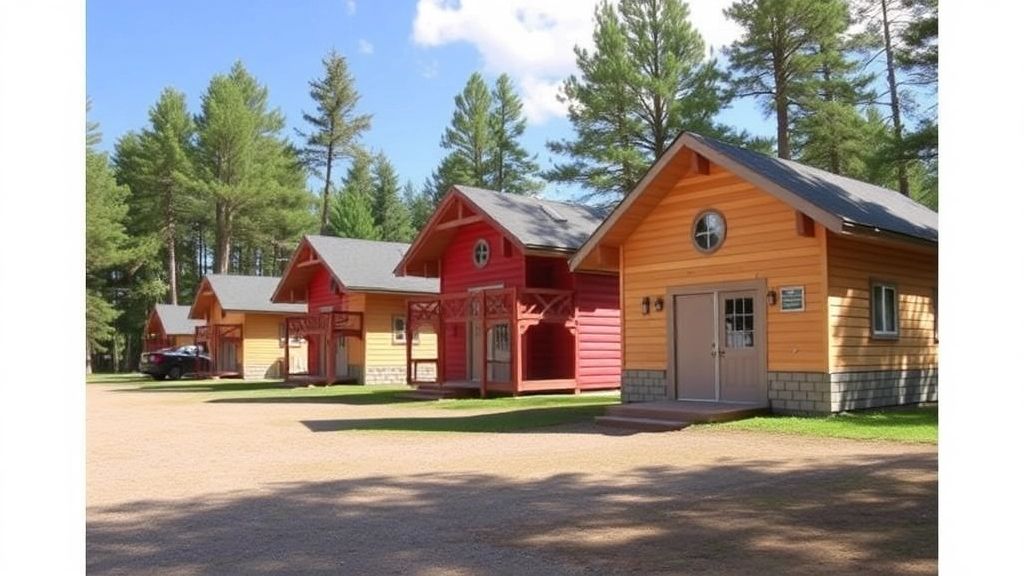Welcome to the Ultimate Guide on Summer Camp Buildings!
Whether you’re a camp director, architect, or just someone curious about how these essential structures come together, this article has something for you. We’ll explore everything from the types of buildings you need, like camp cabins and multi-purpose activity centers, to crucial design considerations for dining halls and health and safety facilities. With a focus on sustainable building practices and accessibility, we’ll ensure your camp is not only functional but also inclusive and eco-friendly.
We’ll also dive into practical aspects like maintenance and durability, offering cost-effective construction solutions that won’t break the bank. Real-world case studies will illustrate successful camp buildings, providing you with actionable insights and inspiration. So, buckle up as we embark on this comprehensive journey to create the perfect summer camp environment, ensuring a memorable and safe experience for all campers. Let’s get started!
Types of Summer Camp Buildings
Alright, let’s dive into the nitty-gritty of summer camp buildings. If you’re planning a summer camp, you’ve probably got a ton of questions swirling around in your head. What kinds of buildings do you need? How do you keep them functional and fun? And most importantly, how do you make sure they don’t fall apart after one summer? Don’t worry. I’ve got you covered.
The Basics: What Types of Buildings Do You Need?
When it comes to summer camps, there are a few essential types of buildings you can’t skip. Here’s a rundown:
Camp Cabins
Cabins are the heart and soul of any summer camp. This is where the kids sleep, hang out, and create lifelong memories. You want these to be cozy but durable. Think about:
- Bunk beds: Space-saving and fun for the kids.
- Storage: Lockers or cubbies for personal items.
- Ventilation: Good airflow to keep things fresh.
Dining Halls
The dining hall is where everyone gathers to eat, chat, and bond. It’s more than just a place to grab a meal; it’s a community hub. Consider:
- Seating arrangements: Long tables for family-style meals.
- Kitchen facilities: Efficient and safe for meal prep.
- Acoustics: Keep the noise level manageable.
Multi-purpose Activity Centers
These are the versatile spaces where all the action happens. From arts and crafts to indoor games, you need a flexible space. Think about:
- Open floor plans: Adaptable for different activities.
- Storage: Easy access to equipment and materials.
- Lighting: Bright and inviting.
Health and Safety Facilities
You can’t ignore the importance of health and safety. A well-equipped infirmary is a must. Key features include:
- First aid supplies: Fully stocked and easily accessible.
- Private rooms: For isolating sick campers.
- Emergency access: Quick routes for ambulances if needed.
Staff Quarters
Your staff needs a comfortable place to rest and recharge. After all, happy staff means happy campers. Consider:
- Private rooms: For some personal space.
- Common areas: For staff to relax and bond.
- Amenities: Basic comforts like Wi-Fi and laundry facilities.
Real Questions, Real Answers
You might be thinking, “Do I really need all these buildings?” The short answer is yes. Each type of building serves a unique purpose and contributes to the overall camp experience. Skimping on any one of these can lead to logistical nightmares and unhappy campers.
Keeping It Real
When designing your camp buildings, remember to keep it real. You don’t need to go overboard with luxury, but you do need to ensure they’re functional and safe.
Essential Features of Camp Cabins
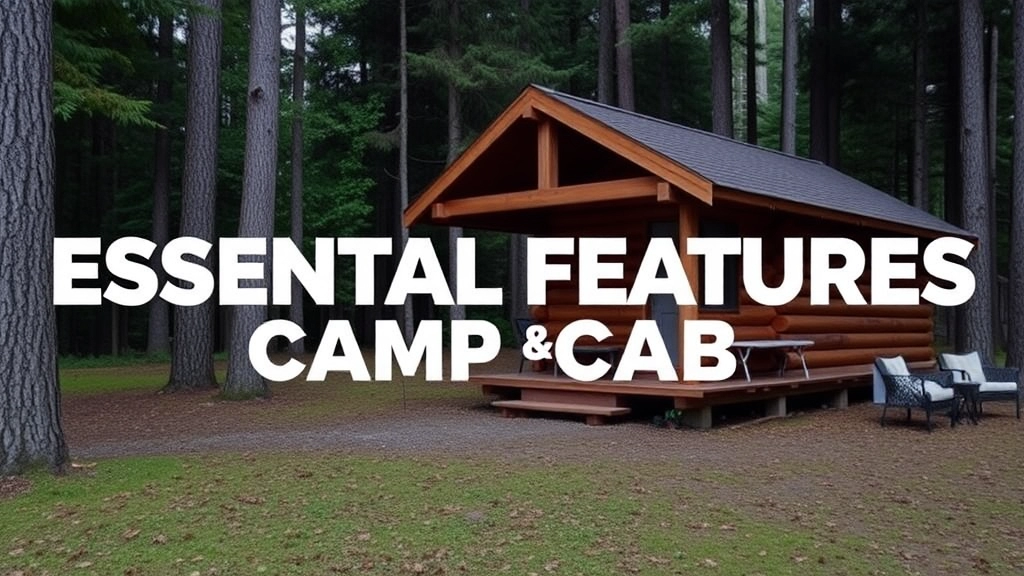
Ever been to a summer camp and thought, “I wish these cabins were a bit more comfortable?”
Yeah, me too.
Let’s break down what makes a camp cabin not just bearable, but actually enjoyable.
Comfort and Coziness
First off, comfort.
No one wants to sleep on a rock-hard bed after a day of hiking.
Here’s what you need:
- Comfy mattresses: Think memory foam, not ancient springs.
- Warm bedding: Nights can get chilly, even in summer. A good sleeping bag or blanket is a must.
- Proper ventilation: No one likes a stuffy room. Windows that open and maybe a ceiling fan can do wonders.
Practicality
Next up, practicality.
You’re at camp to have fun, not to wrestle with impractical furniture.
- Storage space: Hooks for hanging wet towels, shelves for personal items.
- Durable flooring: Mud, dirt, and who-knows-what-else will get tracked in. Easy-to-clean floors are a lifesaver.
- Power outlets: For charging phones or plugging in a fan. But keep it limited to maintain that “off-the-grid” feel.
Safety First
Safety is non-negotiable.
No one wants to get hurt, especially not in a remote location.
- Smoke detectors: Basic but essential.
- Fire extinguishers: Within easy reach.
- Sturdy construction: No wobbly bunk beds or weak floorboards.
Social Spaces
Social spaces make a huge difference.
A cabin isn’t just for sleeping; it’s for bonding.
- Common areas: A small seating area where campers can chat or play games.
- Outdoor deck: Perfect for evening talks under the stars.
Personal Touches
Finally, a few personal touches can make a cabin feel like home.
- Decor: A few posters or themed decorations can add character.
- Campfire stories: Encourage campers to bring a favourite item from home to share stories around the campfire.
Real-World Example
Remember that time you stayed in a cabin with a broken window and a lumpy mattress?
Yeah, not fun.
But the next year, the camp upgraded the cabins with new beds, better ventilation, and a cozy common area.
Made all the difference, right?
Design Considerations for Dining Halls
Ever wondered why some camp dining halls feel like the heart of the camp while others fall flat? Well, let’s dive into it.
What Makes a Dining Hall Work?
First off, dining halls are more than just places to eat. They’re the social hubs where campers bond over meals, share stories, and create memories. So, what should we keep in mind when designing these spaces?
Space and Layout
Space is crucial. You don’t want campers crammed together like sardines. Think about:
- Seating arrangements: Tables should be big enough to accommodate groups but also movable for different activities.
- Flow: Ensure there’s enough room for people to move around without bumping into each other. No one likes a traffic jam when they’re hungry.
- Flexibility: The space should be adaptable for events, not just meals.
Lighting and Ambiance
Lighting sets the mood. Natural light is a win, so big windows are a must. But don’t forget about:
- Artificial lighting: It should be warm and inviting, not harsh and clinical.
- Ambiance: A cosy atmosphere can make a huge difference. Think about using wood, warm colours, and maybe even some camp-themed decor.
Kitchen Efficiency
Behind every great dining hall is a kitchen that’s up to the task. Here’s what you need:
- Space: Enough room for staff to work efficiently without stepping on each other’s toes.
- Equipment: Commercial-grade appliances that can handle the volume of food prep.
- Storage: Plenty of it. You need space for ingredients, utensils, and cleaning supplies.
Health and Safety
Health and safety can’t be overlooked. Here’s a quick checklist:
- Sanitation: Easy-to-clean surfaces and proper waste disposal systems are non-negotiable.
- Ventilation: Good airflow to keep the kitchen and dining area fresh.
- Emergency exits: Clearly marked and easily accessible.
Sustainability
In today’s world, sustainability is key. Here are a few tips:
- Energy-efficient appliances: Save on electricity and reduce your carbon footprint.
- Recycling programs: Encourage campers to recycle and compost.
- Sustainable materials: Use eco-friendly building materials wherever possible.
Real-Life Example
Let’s talk about Camp Evergreen’s dining hall. They nailed it by:
- Using reclaimed wood for a rustic yet modern feel.
- Installing solar panels to power their kitchen.
- Creating a modular seating arrangement that can be easily reconfigured for different events.
Campers love it, and it’s a hit with the staff too. For more tips on creating a memorable camping experience, check out our Summer Camping Top Tips & Gear Essentials and learn about the Culture, Traditions, and Activities at Summer Camps.
Multi-purpose Activity Centers
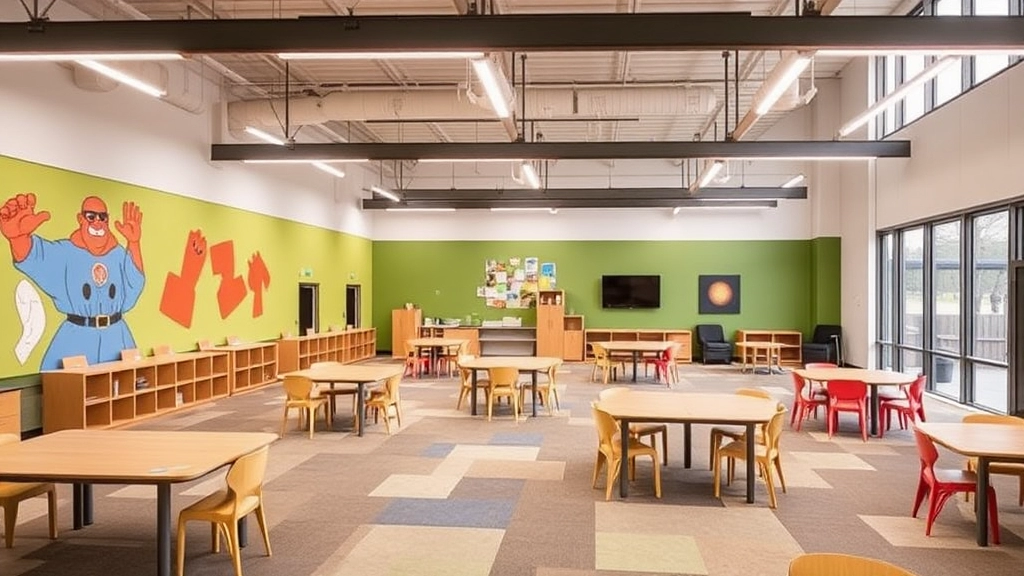
Ever wondered how to make the most out of limited camp space?
How do you create a building that can handle everything from arts and crafts to sports and meetings?
That’s where multi-purpose activity centers come into play.
These buildings are the Swiss Army knives of summer camps.
They need to be versatile, durable, and welcoming.
Why Multi-purpose Activity Centers Matter
Let’s face it, camps have a lot going on.
From rainy day activities to evening events, you need a space that can adapt.
But how do you design such a flexible space?
Key Features to Include
Here’s what you need to nail it:
- Open Floor Plans: Flexibility is key. An open layout allows for easy reconfiguration.
- Durable Materials: Think heavy-duty flooring and robust walls. Kids aren’t exactly gentle.
- Storage Solutions: Built-in storage helps keep the space tidy and functional.
- Lighting: Natural light is a winner, but adjustable artificial lighting is essential for different activities.
Design Tips
Breaking it down, here are some design tips:
- Zoning: Create zones for different activities. Think sports, arts, and chill-out areas.
- Acoustics: Soundproofing is a game-changer. No one wants to hear a basketball game while painting.
- Multi-functional Furniture: Chairs and tables that can be easily moved or stacked make a huge difference.
- Tech Integration: Wi-Fi and charging stations are a must. Even camps need to stay connected.
Real-life Example
Take Camp Blue Lake, for instance.
They transformed an old barn into a multi-purpose activity center.
With an open floor plan and smart zoning, they host everything from yoga classes to movie nights.
And guess what?
Campers love it.
Keeping It Fresh
To keep your multi-purpose activity center fresh and engaging:
- Rotate activities regularly.
- Keep the space clean and well-maintained.
- Listen to camper feedback and make adjustments.
Health and Safety Facilities
Health and Safety Facilities: The Backbone of Any Summer Camp
Alright, let’s cut to the chase. When it comes to summer camps, health and safety facilities are non-negotiable. Parents worry about their kids’ well-being, and rightly so. How do we ensure that every camper is safe and sound? Let’s break it down.
Why Are Health and Safety Facilities Crucial?
First off, let’s address the elephant in the room. Accidents happen. Kids are adventurous, and that’s a good thing. But it also means bumps, scrapes, and sometimes more serious injuries. So, what do we do?
- First Aid Stations: These are the front lines. Every camp needs multiple first aid stations stocked with the essentialsâbandages, antiseptics, and pain relievers. Think of these as your quick response units.
- Nurse’s Office: A dedicated space where a qualified nurse can handle more serious issues. This isn’t just about injuries; it’s also for dealing with allergies, illnesses, and any medical emergencies.
- Emergency Protocols: Clear, well-rehearsed plans for what to do in case of fire, severe weather, or other emergencies. This is where drills come into play. Everyone should know the drillâliterally.
What Should These Facilities Include?
Here’s a checklist, because who doesn’t love a good checklist?
- Medical Supplies: Beyond the basics, think about epi-pens, inhalers, and other specialised medical equipment.
- Sanitation Stations: Hand sanitiser dispensers, wash stations, and clean bathrooms. Hygiene is a big part of health, after all.
- Isolation Rooms: For contagious illnesses. You don’t want one sick kid turning into a camp-wide epidemic.
- Defibrillators: Life-saving devices that should be easily accessible and staff should be trained to use them.
Real Talk: What Are the Challenges?
Let’s be realâsetting up top-notch health and safety facilities isn’t a walk in the park. Here are some common hurdles:
- Budget Constraints: High-quality medical supplies and trained staff cost money. But skimping here? Not an option.
- Staff Training: It’s not enough to have the right equipment; staff need to know how to use it. Regular training sessions are a must.
- Keeping Up with Regulations: Health and safety regulations can change. Staying compliant is a full-time job in itself.
Stories from the Field
Let me share a quick story. At Camp Sunshine, they had a situation where a camper had a severe allergic reaction. Thanks to their well-equipped nurse’s office and a trained nurse, the camper was treated promptly and safely. The parents were relieved, and the camp’s reputation soared. This is what having the right facilities can do.
Linking It All Together
Health and safety facilities aren’t just standalone structures; they’re part of a bigger picture. They connect with essential features of camp cabins, ensuring that every part of the camp is a safe haven. They also tie into sustainable building practices, as clean and green environments contribute to overall health.
In the end, health and safety facilities are the backbone of any summer camp. They’re what give parents peace of mind and keep campers safe. Remember, it’s not just about having these facilitiesâit’s about maintaining them, training your staff, and always being prepared.
Sustainable Building Practices
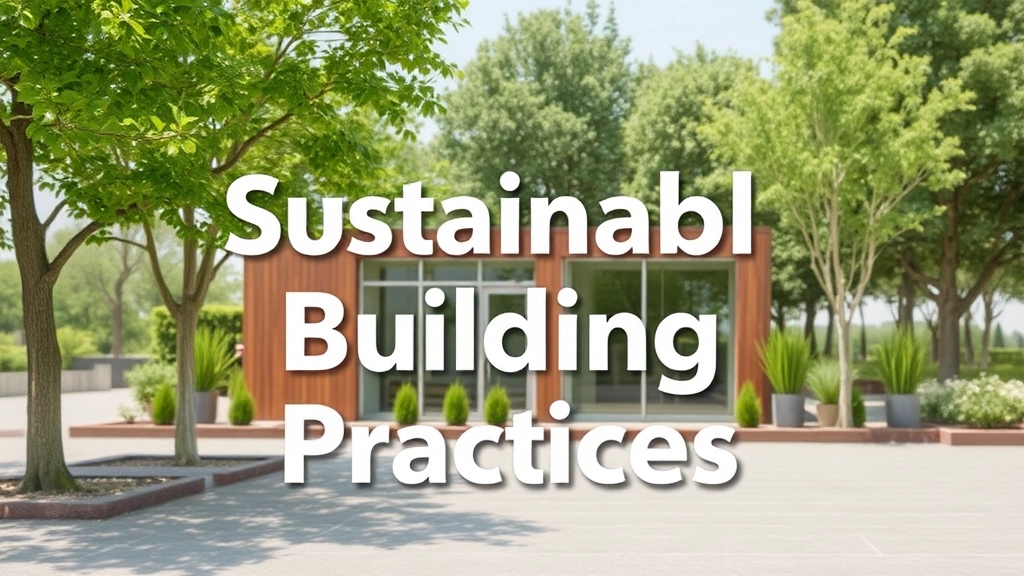
Ever wondered how to keep your summer camp eco-friendly without breaking the bank?
Yeah, me too.
Sustainable building practices are not just a trend—they’re a necessity.
Especially when it comes to summer camps where nature is the star of the show.
Let’s dive into the nuts and bolts of making your camp buildings green and lean.
Why Go Sustainable?
First off, why should we care?
- Cost Savings: Lower energy bills are always a win.
- Eco-Friendly: Less impact on the environment.
- Healthier Spaces: Better air quality and natural lighting.
Key Sustainable Practices
Alright, let’s get practical.
Here are some sustainable practices you can implement right now:
1. Use Renewable Materials
- Bamboo: Strong and grows like crazy.
- Recycled Wood: Keeps old wood out of landfills.
- Reclaimed Metal: Durable and already made.
2. Energy Efficiency
- Solar Panels: Generate your own power.
- LED Lighting: Cuts down on electricity use.
- Insulation: Keeps the place warm in winter, cool in summer.
3. Water Conservation
- Low-Flow Fixtures: Save water without sacrificing comfort.
- Rainwater Harvesting: Collect and use rainwater for non-drinking purposes.
Real Talk: Challenges
Let’s be real.
Going green isn’t always easy.
- Initial Costs: Solar panels and high-quality insulation can be pricey upfront.
- Maintenance: Some sustainable materials need special care.
- Finding Suppliers: Not everyone stocks eco-friendly materials.
But the long-term benefits?
Totally worth it.
Success Stories
Still not convinced?
Here are some real-life examples:
- Camp Green Lake: Switched to solar power and cut energy costs by 50%.
- EcoCamp: Built entirely from recycled materials and attracts eco-conscious campers.
Accessibility in Camp Architecture
Ever wondered why some summer camps are a blast for everyone while others leave some kids feeling left out? Accessibility in camp architecture is a big deal, and it’s something we can’t afford to ignore. Let’s dive into what makes a camp truly accessible and why it matters.
Why Accessibility Matters
So, why should you care about accessibility in camp architecture? Simple. Everyone deserves to have a great time at camp, regardless of their physical abilities. Imagine a kid in a wheelchair who can’t join their friends in the dining hall because there’s no ramp. Or think about a visually impaired camper struggling to navigate the activity centre. These are real issues that can turn an exciting adventure into a frustrating experience.
Key Features of Accessible Camp Architecture
Making a camp accessible isn’t just about ticking boxes; it’s about creating an environment where everyone feels welcome and included. Here are some key features to consider:
- Ramps and Elevators: Forget about stairs-only buildings. Ramps and elevators are a must.
- Wide Doorways: Ensure doorways are wide enough for wheelchairs and mobility aids.
- Accessible Bathrooms: Include grab bars, low sinks, and roll-in showers.
- Signage: Use braille and high-contrast signs to help visually impaired campers.
- Hearing Loops: Install hearing loops in common areas for those with hearing aids.
Design Tips for Accessibility
Alright, let’s get into the nitty-gritty of designing accessible camp buildings. Here are some practical tips:
- Level Ground: Keep pathways level and free of obstacles.
- Non-slip Surfaces: Use non-slip materials for floors and walkways.
- Seating Options: Provide seating at various heights and with armrests.
- Lighting: Ensure good lighting in all areas, especially in pathways and entrances.
- Emergency Exits: Make sure emergency exits are accessible and clearly marked.
Real-Life Examples
Let me share a story to bring this home. I once visited a camp that had recently revamped its facilities to be more accessible. They added ramps, widened doorways, and even included sensory rooms for kids with autism. The difference was night and day. Kids who previously felt left out were now fully engaged and having the time of their lives. It was a game-changer.
Internal Links to Check Out
Maintenance and Durability
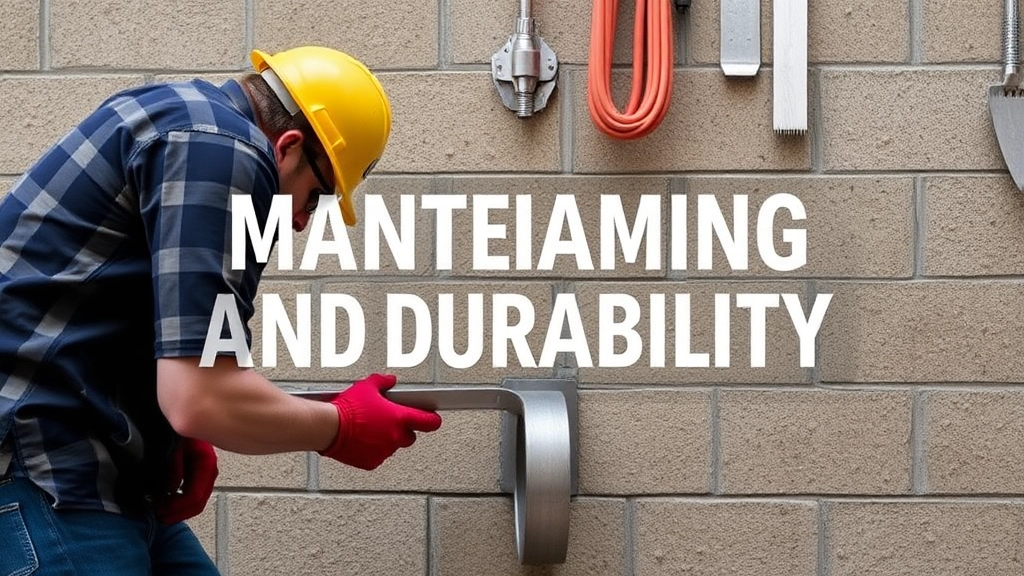
Ever worried about how long your camp buildings will last?
Or maybe you’re stressing over the cost of constant repairs?
I get it.
Let’s dive into how to make sure your summer camp buildings stand the test of time.
Why Maintenance Matters
First off, maintenance is crucial.
Without it, even the best-built structures will fall apart.
Think about it like this: you wouldn’t drive your car for years without an oil change, right?
The same goes for your camp buildings.
Key Maintenance Tips
Here are some key tips to keep your buildings in top shape:
- Regular Inspections: Check for wear and tear at least twice a year.
- Weatherproofing: Make sure your buildings can handle the elements—rain, snow, heat, you name it.
- Pest Control: Keep those pesky critters out to avoid structural damage.
- Cleaning: Regular cleaning prevents mould and prolongs the life of materials.
Durability Features
Now, let’s talk about durability.
When designing your camp buildings, think long-term.
Here are some features to consider:
- Quality Materials: Invest in high-quality, durable materials. It might cost more upfront, but it saves money in the long run.
- Solid Foundations: A strong foundation is key to any building’s longevity.
- Protective Coatings: Use paints and finishes that offer protection against the elements.
Real-Life Example
Take Camp Greenwoods.
They invested in durable materials and regular maintenance.
Result?
Their buildings have lasted over 50 years with minimal repairs.
Linking to Other Topics
Maintenance and durability tie into other aspects of camp architecture.
For example, sustainable building practices can reduce the need for repairs.
And accessibility features should be built to last, ensuring everyone can enjoy the camp for years to come.
Cost-Effective Construction Solutions
Alright, let’s get real. Building a summer camp can be a massive financial undertaking, and everyone wants to stretch their pounds as far as they can go. So, how do we keep costs down without skimping on quality or safety? Here are some practical, no-nonsense tips to help you achieve just that.
Understanding the Basics
First off, cost-effective construction doesn’t mean cheap. It means smart. It means making choices that give you the best bang for your buck. Here are some key points to consider:
- Material Selection: Opt for materials that are durable yet affordable. Think about using reclaimed wood, corrugated metal, or even shipping containers for structures.
- Labour Costs: Skilled labour can be expensive, so consider a mix of professional builders and volunteers. Many camps have successfully used community efforts to cut down on costs.
- Modular Designs: Prefabricated or modular buildings can be a lifesaver. They are quicker to assemble and often cheaper in the long run.
Planning and Design
Good planning is half the battle. Here’s how you can plan smartly:
- Site Assessment: Choose a site that requires minimal preparation. Avoid areas that need extensive grading or clearing.
- Energy Efficiency: Design buildings to be energy-efficient. Use natural lighting and ventilation to cut down on electricity costs.
- Multi-Functional Spaces: Design spaces that can serve multiple purposes. For example, a dining hall that can double as a meeting room or activity centre.
Budget-Friendly Tips
Let’s break down some actionable tips:
- DIY Elements: Incorporate elements that can be built or assembled by volunteers. Think picnic tables, benches, and even some basic structures.
- Bulk Purchasing: Buy materials in bulk to get discounts. Partner with other camps or organisations to make larger purchases.
- Second-Hand Finds: Don’t shy away from second-hand or surplus materials. Many times, you can find high-quality items at a fraction of the cost.
Real-Life Examples
Let me share a story. A camp I worked with in the Lake District managed to build an entire activity centre using reclaimed wood and volunteer labour. They saved thousands of pounds and created a building that was not only functional but also had a story to tell. Another camp in Wales used shipping containers to create a series of cabins. They were quick to assemble, cost-effective, and surprisingly cosy.
Long-Term Savings
Remember, the goal is not just to save money upfront but also in the long run. Here’s how:
- Low-Maintenance Materials: Choose materials that require minimal upkeep. Metal roofs, for example, last longer and need less maintenance than traditional shingles.
- Energy-Efficient Systems: Invest in energy-efficient heating, cooling, and lighting systems. It might cost more initially but will save you money over time.
- Sustainable Practices: Incorporate sustainable practices such as rainwater harvesting and solar panels. These not only reduce operational costs but also make your camp more eco-friendly.
For more insights on creating a functional and safe summer camp environment, check out our guide on building a summer camp wooden arch. If you’re looking for ideas on how to make your camp more enjoyable and engaging, don’t miss our article on top summer camp games and activities.
Case Studies of Successful Camp Buildings
Ever wondered what makes a summer camp building truly successful?
It’s not just about the structure; it’s about how it serves the campers and staff.
Let’s dive into some real-life examples that have nailed it.
Camp Woodland: The Eco-Friendly Marvel
Keyword: Successful Camp Buildings
Camp Woodland is a prime example of blending nature and architecture seamlessly.
They’ve gone all-in on sustainability.
Here’s what they did right:
- Solar Panels: Reduced energy costs and taught campers about renewable energy.
- Rainwater Harvesting: Used for toilets and irrigation, cutting down on water bills.
- Natural Ventilation: No need for air conditioning, even in the summer heat.
These choices not only save money but also educate kids on eco-friendly practices.
Pine Ridge Camp: The Accessibility Champion
Keyword: Accessibility in Camp Architecture
Pine Ridge Camp has set the bar high for inclusivity.
Every building is designed with accessibility in mind.
Key features include:
- Ramps and Elevators: Ensuring everyone can move around freely.
- Braille Signage: For visually impaired campers.
- Wide Doorways: Accommodating wheelchairs with ease.
This focus on accessibility has made Pine Ridge a favourite among families with special needs.
Bright Horizons: The Multi-Purpose Prodigy
Keyword: Multi-purpose Activity Centers
Bright Horizons knows how to make the most out of every square foot.
Their multi-purpose activity centre is a game-changer.
Here’s why:
- Flexible Spaces: Rooms can be reconfigured for different activities.
- Storage Solutions: Hidden compartments keep equipment out of sight but within reach.
- Tech Integration: Projectors and sound systems for movie nights and presentations.
This building adapts to the camp’s needs, making it a hub of activity and fun.
Green Valley Camp: The Safety First Pioneer
Keyword: Health and Safety Facilities
At Green Valley, safety is paramount.
Their health and safety facilities are top-notch.
What stands out:
- On-Site Medical Centre: Staffed 24/7 with trained professionals.
- Emergency Exits and Drills: Regularly practised, ensuring everyone knows what to do.
- Sanitation Stations: Handwashing points scattered throughout the camp.
These measures give parents peace of mind and keep campers safe and healthy.
Redwood Retreat: The Cost-Effective Genius
Keyword: Cost-Effective Construction Solutions
Redwood Retreat proves you don’t need a massive budget to build great camp facilities.
They’ve mastered cost-effective construction.
Their secrets:
- Modular Buildings: Quick to assemble and easy on the wallet.
- Local Materials: Reduced transportation costs and supported the local economy.
- Volunteer Labour: Engaged the community, cutting down on labour costs.
Redwood Retreat shows that smart planning can lead to fantastic results without breaking the bank.
For more tips on setting up your camp, check out our summer camp canteen setup guide and explore the best cabin designs and features to enhance camper experience.
FAQs about Summer Camp Buildings
What are the essential features of camp cabins?
Camp cabins should offer comfort, practicality, safety, social spaces, and personal touches. This includes comfy mattresses, proper ventilation, storage space, smoke detectors, and common areas for socializing.
How can multi-purpose activity centers be designed effectively?
Effective design of multi-purpose activity centers includes open floor plans, durable materials, storage solutions, and good lighting. Zoning, acoustics, multi-functional furniture, and tech integration are also important.
Why are sustainable building practices important for summer camps?
Sustainable building practices are crucial for cost savings, environmental impact, and creating healthier spaces. Using renewable materials, ensuring energy efficiency, and practicing water conservation are key elements.
What are some key maintenance tips for camp buildings?
Regular inspections, weatherproofing, pest control, and cleaning are essential for maintaining camp buildings. Using quality materials, solid foundations, and protective coatings also contribute to long-term durability.
How can camp cabins be made more comfortable?
Comfortable camp cabins should have memory foam mattresses, warm bedding, and proper ventilation. Adding personal touches like decor and encouraging campers to bring items from home can also enhance comfort.
What features should be included in a multi-purpose activity center?
Key features include open floor plans, durable materials, built-in storage, and adjustable lighting. Creating zones for different activities, soundproofing, and using multi-functional furniture are also important.
What are some sustainable materials to use in camp buildings?
Renewable materials like bamboo, recycled wood, and reclaimed metal are excellent choices. These materials are strong, eco-friendly, and help reduce waste.
What challenges might be faced when implementing sustainable practices?
Challenges include initial costs, maintenance needs, and finding suppliers for eco-friendly materials. However, the long-term benefits such as cost savings and environmental impact make it worthwhile.
How can camp buildings be designed for durability?
Designing for durability involves using high-quality materials, building solid foundations, and applying protective coatings. Regular maintenance and weatherproofing also play a significant role.
Can you provide an example of a successful multi-purpose activity center?
Camp Blue Lake transformed an old barn into a multi-purpose activity center with an open floor plan and smart zoning, hosting activities from yoga to movie nights. Campers love the versatility and design.
What are the benefits of regular maintenance for camp buildings?
Regular maintenance prevents structural damage, prolongs the life of materials, and ensures safety. It includes inspections, weatherproofing, pest control, and cleaning.
How do sustainable practices link to other aspects of camp architecture?
Sustainable practices can reduce the need for repairs and tie into other aspects like accessibility. For example, durable, eco-friendly materials ensure that accessibility features last longer.
References
-
10 Tips for Sustainable Living
-
Energy-Efficient Home Design
-
Importance of Maintenance in Summer Camps

